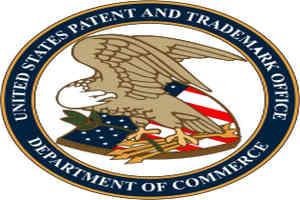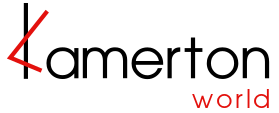
Vices of the Patent System
The Optimal Patent System
Creating the Optimal System
The U.S. patent system operates too inefficiently.
Patent applications take years to be reviewed and patents issued. Legal services for each patent cost tens of thousands or even millions of dollars. These circumstances make the development of the technology startup industry very difficult.
However, the main problem is the lack of certainty of patent protection of inventions. Because of this, thousands of legal conflicts between patent owners, including large corporations, occur. They prevent the use of technology and cause hundreds of billions of dollars in losses to the economy each year.
The U.S. patent system does not contain a definite and meaningful criterion for patent novelty of inventions.
Therefore, the number of patents has exceeded 10 million, a significant portion of which have not created real novelty and clutter the invention database to no avail.
Pseudo-invention patents enable “patent trolls” to profit from abuses of patent law and hinder the development of technologies.
The first main vice of the patent system is the fundamental inefficiency of its subjects – legislative and state bureaucracies.
Lawmakers and bureaucrats believe that laws and regulations should regulate in detail the functioning of residents and businesses. In addition to this belief, they always create an exaggerated appearance of their political and official importance. If they earn one thousand dollars for drafting a one-page document, they get thousands of times more $ for a document needlessly “bloated” to 100 pages.
Therefore, they always draft bills and regulatory documents that are far more voluminous, detailed, and convoluted than is necessary for optimal social regulation.
The vast majority of legislators and bureaucrats are lawyers. After public service, they engage in commercial law practice. The more cumbersome and confusing the laws and regulations are, the larger the size of their fees.
Therefore, lawmakers and bureaucrats set just such laws and regulations.
Therefore, US legislation, including patent legislation, has grown to such enormous proportions that effective enforcement is impossible.
Legislators and bureaucrats have an interest in exacerbating the cumbersome and harmful regulation of the legal system.
Therefore, they obstruct and sabotage reforms of the patent system and other areas of the legislation.
Like all state officials, US PTO employees have no incentive to work intensively and efficiently. Therefore, patent application reviews last for years. Therefore, some number of pseudo-inventions get patents, and a significant number of productive inventions do not get patents.
Recently, I filed a patent application through the US PTO web portal. Half of the links and features in this portal do not work. This web portal is the worst I have used in the history of the Internet.
Like 100 years ago, the main way to communicate with the US PTO is through the phones.
These phones are not answering.
3 weeks after filing, I received a US PTO's paper ( !!! ) letter informing me that I did not file an inventor's declaration, that I must pay a fine for this, and file this declaration within 2 months.
I sent an email to the applicant services office and advised that this declaration was present in the application packet. I did not receive a response in 2 weeks. Then, I sent emails to higher US PTO departments.
After a week, I received a clarification. It turned out that in my declaration signature, which should be between two /slashes/ , a space was inserted between the slash and my name. Therefore, this declaration is invalid.
I filed a declaration with a signature without the space. I paid the fine. As a result, I have not received any response from the US PTO and, at this time, I do not know whether my application has been accepted or rejected.
This example of mine illustrates the US PTO's vicious modus operandi.
Every 10-15 years, Big Business lobbyists make unsuccessful attempts to reform the US patent system.
As an expert in social systems theory, I recommend the following principles for reforming the patent system.
Government patents are the vestige of feudalism.
A governmental, bureaucratic agency is, in principle, incapable of effectively managing the patent system.
Patents define the relationship between private individuals and private enterprises – between patent owners and users.
The patent system should optimize the entrepreneurial environment of the economy.
Therefore, in a normal, efficient republican society, the national business community manages the patent system.
The U.S. private and corporate entities, especially large technology corporations will establish the «National Patent Consortium» that will effectively manage the alternative, public U.S. patent system.
This Consortium will establish procedures for the registration and use of patents, maintain the patent database, and resolve patent disputes.
The Consortium will make decisions based on the classic corporate principle of «A Vote Weight Equals the Contribution».
The criterion of an invention patent novelty should be the creation of a qualitatively new property of the invention object – world.kamerton.global/node/368
Judicial resolution of patent disputes should be based on observance of the classical principles of scientific methodology – world.kamerton.global/node/369
The quasi-feudal principle of granting state patents by no means guarantees their absolute correctness.
At any moment, a court may recognize any patent as not meeting the required criteria of non-obviousness, novelty, and others.
Therefore, the current principle of an imaginary state guarantee of the correctness of patents should be replaced by an application-based procedure for registration of patent claims.
Under this procedure, patent fees minimize the number of low-value applications of pseudo-inventors.
Application of the criterion of a qualitatively new property of an invention object and observance of the principles of scientific methodology in court proceedings will enable to arbitrate patent disputes fairly and quickly.
Within 2-3 years, the «National Patent Consortium» will operate in parallel with the US PTO.
State courts will accept the Consortium's arbitration decisions as authoritative expert opinions.
Within 1-2 years, the majority of the national business community will be convinced of the greater efficiency of the «National Patent Consortium» in relation to the US PTO, will apply mainly patents of the Consortium, and will refuse to use the service of the US PTO, which will be abolished in 3 years due to its uselessness.
Thus, the creation of an optimal US patent system does not require lobbying Congress and passing new laws.
This system will be created through the consolidation of the US business community, primarily technology corporations.
E. Gershman
___







